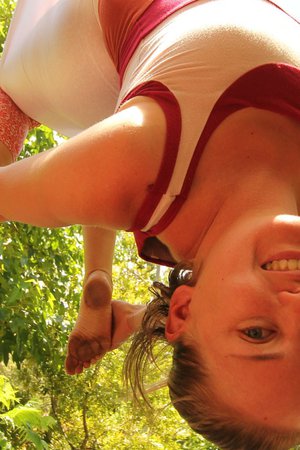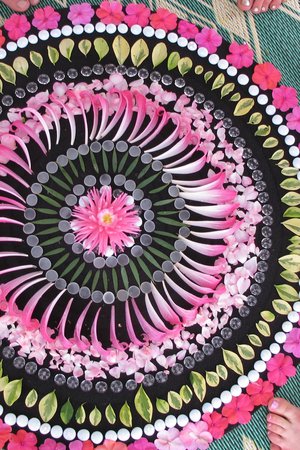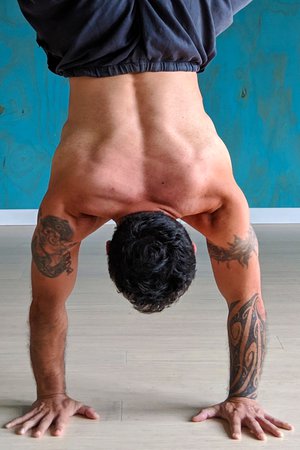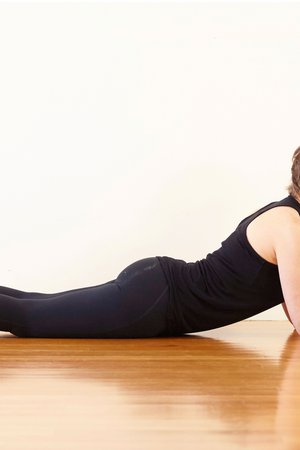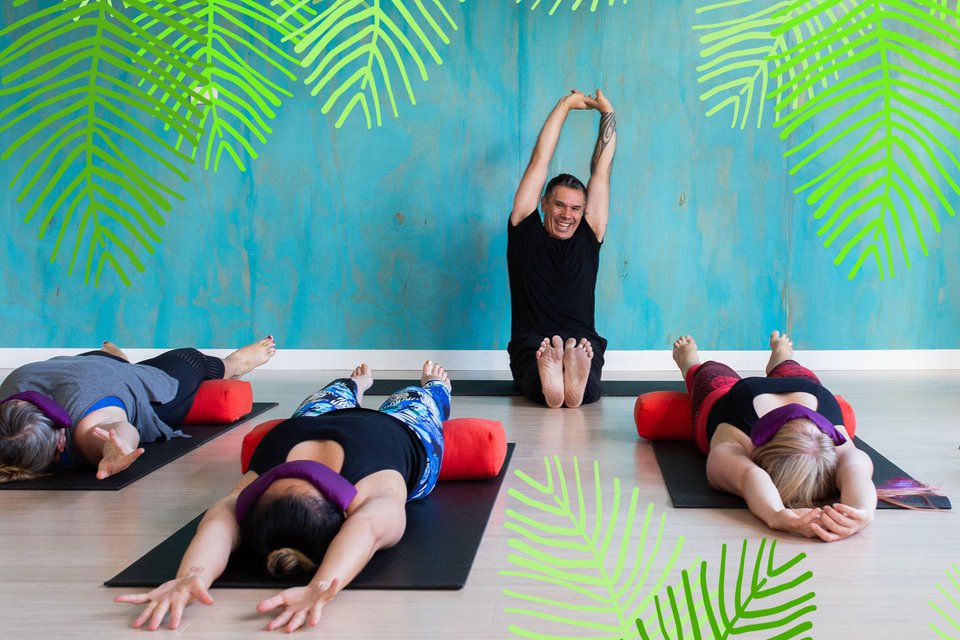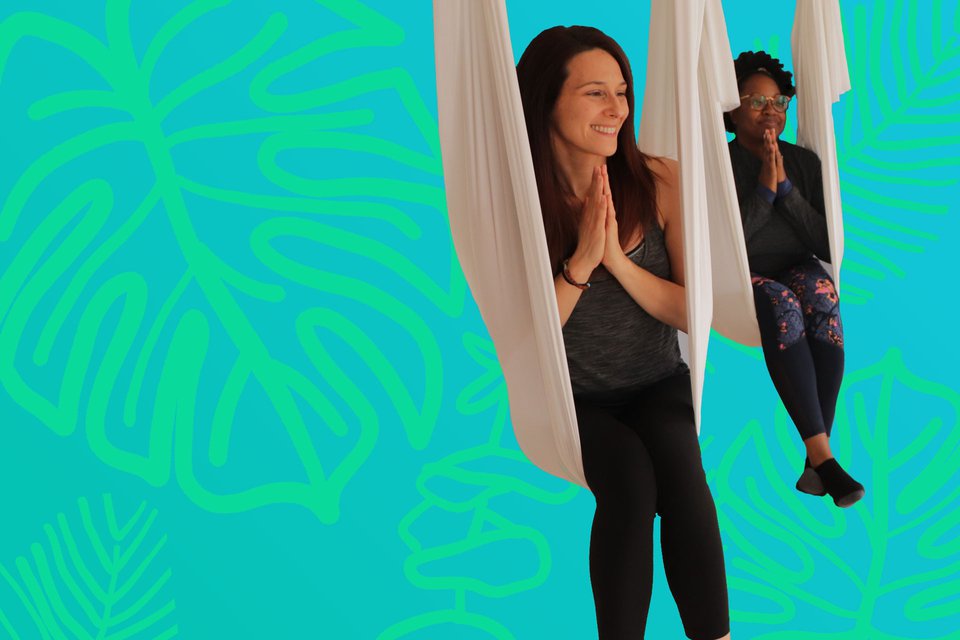How do I live, teach and practice my yoga?
What does Yoga mean to me?
I was recently selected by the Yoga Lunchbox as one of their Best Up-and-Coming Yoga Teachers of Australia and New Zealand. Wow! What an honour!!
You can read the article they published here
As part of the process they asked a few key questions, some of my answers appeared in the article, and I thought I'd share my full response here....
What does teaching yoga mean to you?
Teaching yoga feels like a way to make a positive difference in the world and improve the quality of people's everyday lives. I've never had a job before where I receive so much genuine gratitude and appreciation for what I do. Yoga has helped me so much and Im honoured to be able to share this practice with people.
I also enjoy being creative with sequencing postures and themes, it's a really satisfying feeling when you can tap into the energy in the room, and facilitate a sense of harmony, excitement or relaxation. Some of my classes like yin are quiet and calm, and others, especially antigravity aerial yoga sessions get pretty exuberant. We receive so much pressure from the media and society about how are bodies should look, so it feels great to be able to share a practice that encourages self acceptance, and gives us a chance to have fun and feel good in our bodies.
I teach quite a few private clients and small groups, some of who have been with me for many years. Ive got to see little subtle shifts build into really significant changes over time.
One of my long term clients has used yoga to help with his everyday experience of living with MS. Its been amazing to see his progress, his range of comfortable movement and quality of life has improved so much. Simple things like walking up the stairs, or standing up after sitting for a while used to be a painful experience and sometimes impossible, and now he can do it with ease. He sees me once a week and practices most days. Unlike the rest of his treatment which is prescribed, his yoga practice is his own, based on the postures that feel good in his body that day. He is in charge of how long he holds each shape, how deep he goes, how much time he rests before moving on and which posture he chooses to take next. His wife sometimes joins us on the mat, and sends me home with home made dahl every week!
How do you live your yoga?
From the moment I heard it, I've loved the words and meaning of the lokah peace chant. My husband Rane and I even included it in our wedding ceremony. There are various translations but the message is always about living with kindness. This is how I try to live my yoga.
Lokah samasta sukhino bhavantu
~~ May the entire universe be filled with peace and joy, love and light.
~~ May all beings everywhere be happy and free. In some way, may I contribute to that happiness and freedom for all.
I try to live my life in a way that minimises suffering and makes a positive contribution to our world. I became vegan around 18 years ago, around the same time I got serious about yoga. I try to practice ahimsa as best I can. Vegans have a bad reputation for being a bit over zealous with spreading their philosophy, and I've noticed that this tends to be pretty polarising and counter productive. So rather than trying to preach at people, I focus on eating food that I feel good about and try to share how easy and accessible eating this way can be. Rane and I started a website www.veganguidemelbourne.com and I whenever I bring a dish to a party I try to make it as delicious as possible!
Yoga has always helped me through the 'everyday' emotional ups and downs of work stress, relationship issues and general challenges of being human. But it wasn't until my husband was diagnosed with stomach cancer last year, and we were then told the cancer had spread to his lung and was terminal, that I really felt some of the deeper layers of it's teachings.
It's one thing to practice non attachment, and being present in the moment in a forward bend or arm balance, but quite another when you are told the person you love most in the world is going to die.
I'm not sure if we actually conquered Abhinivesha (fear of death) but I think that my years of learning about yogic philosophy, and trying to practice it, really helped me get to a place where we could make the most of the time we still had together. My yoga practice was a space where I could find peace and calm, to give me the strength to deal with whatever lay ahead.
Luckily, the secondary cancer was a misdiagnosis, and Rane was able to have the tumour removed. I had a lot of support from family and friends, but I was his primary carer during his chemotherapy, the time leading up to the surgery and his recovery after. As a side note, Rane is doing great, and attributes Yoga and Meditation as being pivotal in his rapid recovery!
My own practice, and teaching, really helped get me through this time. It was also when I really benefited from yin yoga. Sometimes I'd be completely physically and emotionally exhausted when I arrived at studio, I definitely wouldn't have had the energy my usual vinyasa practice, but yin felt like it literally decompressed me. I could feel tension gradually easing from my mind and body. The strong sensations I felt in the practice helped too, there was enough going on in my body that my mind had plenty to focus on, and I could stay present in a way that often eluded me in a guided relaxation or restorative practice.
What's your home practice like?
Every morning starts with a 20 minute mindfulness meditation with my husband. Earlier this year we attended a week long meditation retreat at the Gawler Cancer Foundation. The facilitators were amazing, and the week of consistent practice really helped give my home practice a solid base. Also, making a rule for myself that I wasn't allowed to look at my phone or the internet until after meditation has really helped!
On Mondays, Tuesdays I do 1-2 hours of my own active asana practice. This is often where I find my inspiration for my week of teaching, I put some music on and explore sequencing in a playful way. Depending on my mood, I'll use the mat or the aerial hammock. While I often end up teaching the sequences that evolve in my home practice, I mentally designate this time for me. I always practice according to my own energy levels, how I'm feeling in my body (ie is anything feeling tense or in need of attention) and state of mind. Most importantly, I always aim to stay present.
I've been working towards hanumanasana for a couple of years (it's been a slow journey, and a lesson in patience and non attachment!). This goal has bought a more considered anatomical focus and structure to my practice. I've researched different approaches, tried them out in my own practice and found that an active flexibility focus feels best in my body. I actually find this part of my practice is when my mind is at it's steadiest. I've refined my splits sequence to the point where it's pretty similar each day, and so I don't have the 'what shall I do next?' flow of thought, and while I don't push, the intense physicality of these postures really brings my awareness into the present moment.
I teach a yin and myofascial release class on Wednesday nights, so I dedicate Wednesday afternoons to preparing for this. It's the perfect time to spend a couple of hours rolling on balls, and free forming my own yin practice. Usually just based on the next shape I feel like making. I'll often include some restorative antigravity yoga in this time, and a meditation while sitting in the hammock.
I might do a very chilled out and similar practice on Thursdays, or often I'll use that time to rest.
I also go to regular classes at a local studio, Australian Yoga Academy Northcote. After years of just practicing where I taught, its been great to go to a studio where I have no responsibilities, where I go just to practice, not to work. This was particularly important while Rane was sick. Some days I really didn't have the energy for social interaction, remembering peoples names and answering their questions, the way you do when you're part of the teaching team. There were a few classes that I just cried right through. I'm not sure if I would have gone to class on those days if I anticipated seeing my regular students and co workers there, and therefore would never have had the opportunity to completely let go and let it all out which was greatly needed at the time!
Now that we are through that intense period, I still value the fresh inspiration as I am guided through these classes. Most weeks I go to a Friday morning Vinyasa class and Yin on Saturday and Sunday.
I'll usually go to a workshop every month or so, and a longer intensive or teacher training each year. We're really lucky in Melbourne, and have a vibrant community of amazing teachers who run regular workshops as well as international teachers visiting. Weve also been fortunate enough to attend Bali Spirit Festival twice. Im booked to teach at an upcoming Yogafest here in Victoria and Kawai Purapura yoga festival in Auckland next year, so Im really looking forward to checking out some of the other teachers workshops and immersing myself in the energy of the festivals.
Im pretty blown away to have made my way onto a short list of Australia and New Zealands Best Up-and-Coming Yoga Teachers. I was short listed as I was nominated by my students, which is really heart warming. One aspect of the yoga community that I love is the support that teachers show each other, and this is a really beautiful example of that spirit. So thanks Yoga Lunchbox supporting emerging teachers, and considering me among them!

